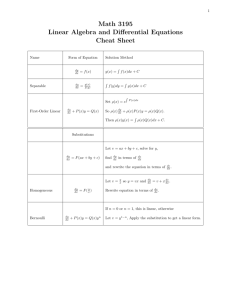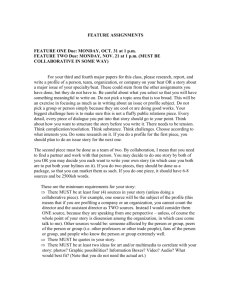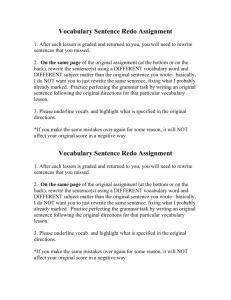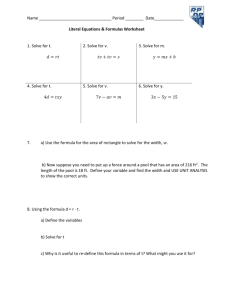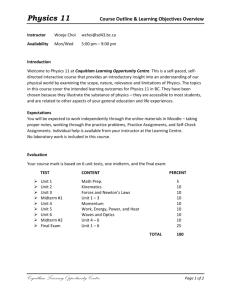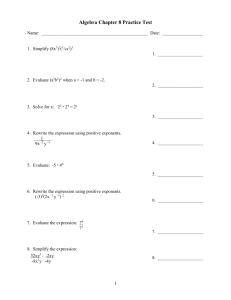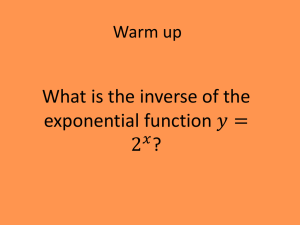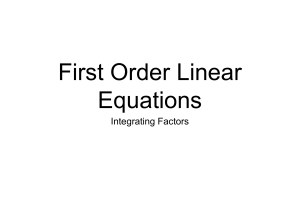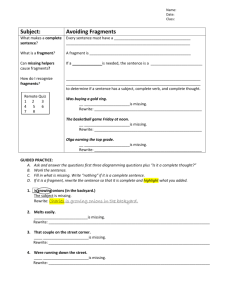SOLVING FIRST ORDER DIFFERENTIAL EQUATIONS
advertisement
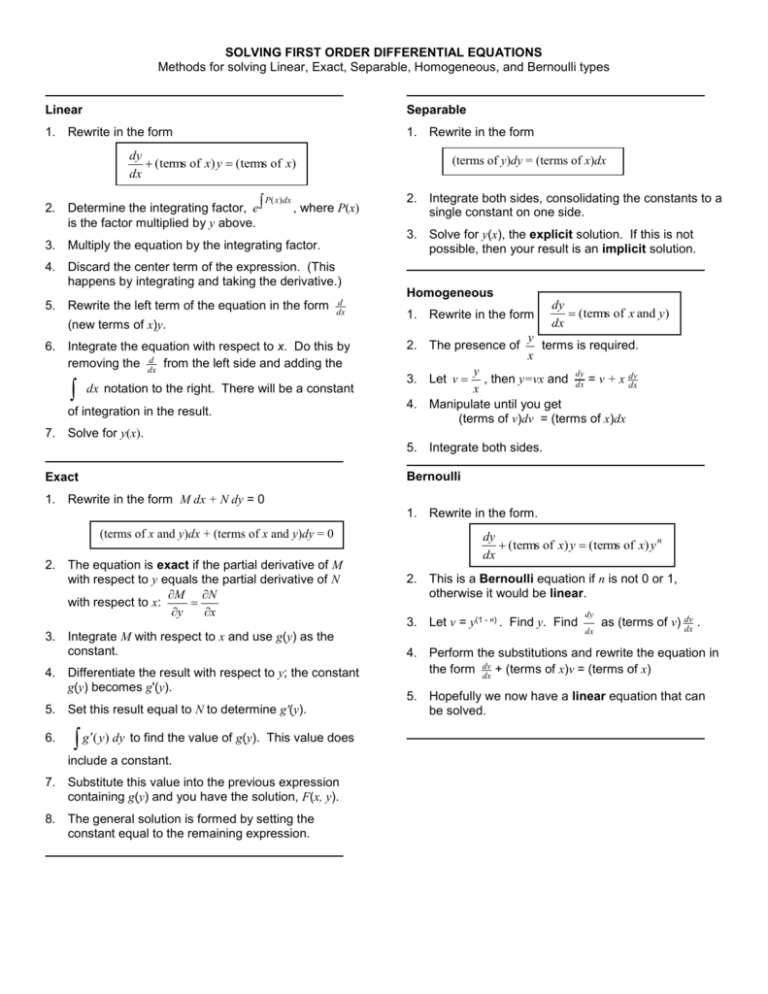
SOLVING FIRST ORDER DIFFERENTIAL EQUATIONS Methods for solving Linear, Exact, Separable, Homogeneous, and Bernoulli types Linear Separable 1. Rewrite in the form 1. Rewrite in the form dy (terms of x) y (terms of x) dx 2. Determine the integrating factor, e is the factor multiplied by y above. P( x ) dx (terms of y)dy = (terms of x)dx , where P(x) 3. Solve for y(x), the explicit solution. If this is not possible, then your result is an implicit solution. 3. Multiply the equation by the integrating factor. 4. Discard the center term of the expression. (This happens by integrating and taking the derivative.) 5. Rewrite the left term of the equation in the form d dx (new terms of x)y. 6. Integrate the equation with respect to x. Do this by d from the left side and adding the removing the dx 2. Integrate both sides, consolidating the constants to a single constant on one side. dx notation to the right. There will be a constant of integration in the result. Homogeneous 1. Rewrite in the form 2. The presence of dy (terms of x and y) dx y terms is required. x y dy , then y=vx and dx = v + x dv dx x 4. Manipulate until you get (terms of v)dv = (terms of x)dx 3. Let v 7. Solve for y(x). 5. Integrate both sides. Bernoulli Exact 1. Rewrite in the form M dx + N dy = 0 1. Rewrite in the form. (terms of x and y)dx + (terms of x and y)dy = 0 2. The equation is exact if the partial derivative of M with respect to y equals the partial derivative of N M N with respect to x: y x 3. Integrate M with respect to x and use g(y) as the constant. 4. Differentiate the result with respect to y; the constant g(y) becomes g'(y). 5. Set this result equal to N to determine g'(y). 6. g ( y) dy to find the value of g(y). This value does include a constant. 7. Substitute this value into the previous expression containing g(y) and you have the solution, F(x, y). 8. The general solution is formed by setting the constant equal to the remaining expression. dy (terms of x) y (terms of x) y n dx 2. This is a Bernoulli equation if n is not 0 or 1, otherwise it would be linear. 3. Let v = y(1 - n) . Find y. Find dy dx as (terms of v) dv . dx 4. Perform the substitutions and rewrite the equation in the form dv + (terms of x)v = (terms of x) dx 5. Hopefully we now have a linear equation that can be solved.
